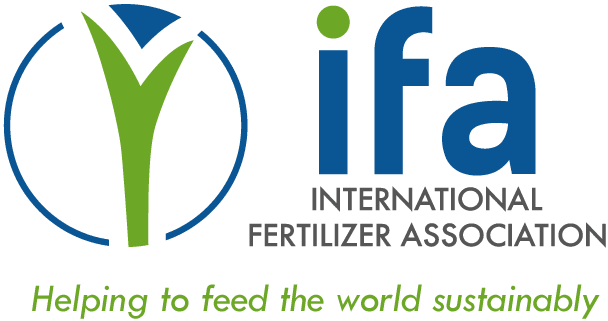FAQs
What is a plant nutrient?
A mineral plant nutrient is an element which is essential or beneficial for plant growth and development or for the quality attributes of the plant or harvested product, of a given plant species, grown in its natural or cultivated environment. A plant nutrient may be considered essential if the life cycle of a diversity of plant species cannot be completed in the absence of the element. Recognized essential mineral elements include nitrogen (N), phosphorus (P), potassium (K), calcium (Ca), magnesium (Mg), sulfur (S), boron (B), chlorine (Cl), iron (Fe), manganese (Mn), zinc (Zn), copper (Cu), molybdenum (Mo) and nickel (Ni). A plant nutrient may be considered beneficial if it does not meet the criteria of essentiality, but can be shown to benefit plant growth and development or the quality attributes of a plant or its harvested product. Recognized beneficial elements include sodium (Na), silicon (Si), cobalt (Co), iodine (I), selenium (Se) and aluminum (Al). As science advances, more elements may be identified as plant nutrients. It is important that fertilizer regulations and other laws are regularly updated accordingly.
Are fertilizers different from pesticides?
Yes – they are very different. Fertilizers are used to add nutrients to the soil and to plants, or in some cases also to animal feed. Appropriate use of fertilizers improves yield, soil health and ultimately human nutrition, due to the nutritional value of the plants having been increased by the mineral elements within the fertilizer.
Pesticides are applied to plants in order to manage or eliminate pests that can destroy or damage crops. They are often more complex chemical compounds with specific modes of action to target certain insect pests, plant diseases or weeds. IFA does not represent pesticide producers or the pesticide industry
Can we feed the global population without mineral fertilizers?
Fertilizers are used across the globe to support sustainable agricultural production, and it is estimated that half the food we eat is produced thanks to mineral fertilizers. The global population is increasing and in order to meet the increased demand for food, we need mineral fertilizers. Without them, it would not be possible to provide enough food of high enough nutritional value based on the available agricultural land.
Are organic or mineral fertilizers better?
Plants primarily take up nutrients in mineral forms. Hence, even organic fertilizers when applied to a soil will first undergo decomposition to release nutrients in inorganic forms that can be absorbed by plant roots.
The 4Rs Principle of nutrient stewardship promotes the use of the right source (fertilizer product), at the right time, in the right place and at the right rate in order to optimize yield and reduce the environmental impact of fertilizers. In some cases the best source may be an organic fertilizer – in others, it may be a mineral fertilizer, or a blend of the two. The needs of the specific soil and plant as well as the economic availability determine which is better.
Do fertilizers have an impact on human health?
Fertilizers are much more than agricultural inputs: by supporting the growth of crops for human and animal consumption, they help provide essential calories, proteins, vitamins, minerals, dietary fiber, antioxidants and other bioactive compounds of importance for human nutrition and health.
Fertilizers play a key role in reducing micronutrient deficiencies in people: enriching fertilizers with micronutrients (also known as agronomic biofortification) and applying them to crops has alleviated deficiencies in zinc, selenium and iodine in communities around the world.
The fertilizer industry supports policies that link agriculture, nutrition and health, and the use of micronutrients where they are needed most.
Do fertilizers damage the environment?
Both excessive and insufficient fertilizer use can negatively affect ecosystems’ functions and biodiversity. It is therefore crucial for improve nutrient management around the world to reduce losses to the environment and increase nutrient use efficiency.
Are we exceeding the planetary boundaries in our use of N and P?
Human actions, especially those of industrialized societies since the Industrial Revolution, have become the main driver of global environmental change. The basic idea of the Planetary Boundaries framework is that maintaining the observed resilience of the Earth system in the Holocene is a precondition for humanity’s pursuit of long-term social and economic development. In 2009, nine such Planetary Boundaries were proposed as a ‘safe operating space’ for the planet, which were further modified in 2015. Two of those refer to altered biogeochemical cycles of nitrogen and phosphorus, and it was stated that both have already been exceeded, thus calling for a reduction in anthropogenic nutrient inputs, including fertilizers.
Although the Planetary Boundary concept is useful for raising awareness about global sustainability and environmental issues it has various shortcomings.
The choice and definition of the boundaries is arbitrary and the whole concept assumes that the Holocene state should be fixed as a baseline, whereas now we the need to feed 9 or 10 billion people by 2050. In that context, the proposed boundaries may not represent a safe operating space for humanity. Planetary Boundaries also provide insufficient guidance for concrete action at regional or national levels. Current levels of nutrient use and nutrient use efficiency vary widely among countries or agricultural production systems within countries, requiring different, more specific targets and solutions. Therefore, the fertilizer industry works with a wide range of stakeholders on developing locally adapted solutions for enhancing nutrient use efficiency across the food chain.
